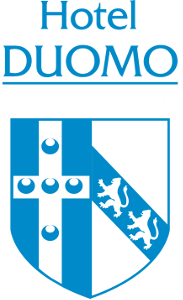Palio

The Palio of Siena.
Colors, crowds, festive shouts, a square covered in yellow turf, 10 horses mounted bareback by 10 jockeys: all together for a race that lasts just a few seconds. For those that see it for the first time, this is the Palio. Instead, for the people of Siena, it is life, passion and history.
Colors, crowds, festive shouts, a square covered in yellow turf, 10 horses mounted bareback by 10 jockeys: all together for a race that last just a few seconds. For those that see it for the first time, this is the Palio. Instead, for the people of Siena, it is life, passion and history. It is the miracle of a game that becomes real life, where there is space for joy, pain, courage, plotting, loyalty and betrayal. It’s a medieval inheritance. On the July 2nd (Palio of the Madonna di Provenzano) and on August 16th (Palio of the Assunta), the city of Siena is put into turmoil and the Palio becomes the center of attention for all the citizens. In this land, the Tuscan land of Guelfs and Ghibellines, where they live with differences, the Palio is sublime, it is the essence of feeling Tuscan, the nobility of being different from the rest, whether it be bell tower or contrada (quarter). Siena has always been open to the world, to culture, but here Time is marked or is emphasized by the Palio. For Contrada members, the year begins on December 1st with the recurrence of Saint Ansano, Patron Saint of Siena. The year then explodes in the springtime with the drawing of the 10 contradas that are to participate in the July 2nd race. From the end of April until mid September, every quarter celebrates the festivities of its own patron saint. These are very particular days when ancient friendship pacts and alliances are renewed.
During each contradas festivity days, the young contrada members wear historic costumes, play drums and wave contrada flags throughout the city’s streets and alleyways paying homage to those that participated before them. There are seventeen contradas, tight within the city walls. During these Palio days, agitated discussions reverberate. They are drowned out only by the buzz of hundreds and thousands of tourists called to this immortal tournament, year after year, for centuries. It is an institution like no other that has remained unchanged for centuries, that’s guided by a counsel and administered like a little statehood. It could even mint its own money. It was this way in Medieval times and it is still this way today. The Palio, as we know it today, was imprinted in 1633.
Cathedral of Siena
The previous ‘Long Palio’ (palio alla lunga) that ran through the streets, without jockeys (as they in Siena ‘scosse’, shaken or shattered) and play manifestations existed for centuries prior 1633. Today the contrada is a main part of social life. Each has its own church where weddings take place, a fountain where young ones are baptized into the contrada, a museum where they display won Palios and trophies and historic buildings to care for. There is even an annual budget set aside by Monte dei Paschi di Siena, the oldest bank in the world (Siena’s bank), just to protect this history and historic event. But for those who really want to enjoy the Palio and to understand it, they must stay in Siena for the four days prior to the race. One must be in the Piazza del Campo when the horses are brought in by their owners and trainers into the square and, there, ten are chosen as eligible for running. One must be in the square when these horses are drawn to represent a contrada. This is where four days of passion begin. The horses are then given to the “barbareschi” of each contrada and taken into the contrada’s stall. The jockeys are assigned a guardian angel (jockeys are otherwise known as corruptible and traitors). Rules and limitations seem to disappear once Palio days begin. Test runs begin and the long days of passion, filled will songs, flag waving and huge curve side dinners become ritual.



